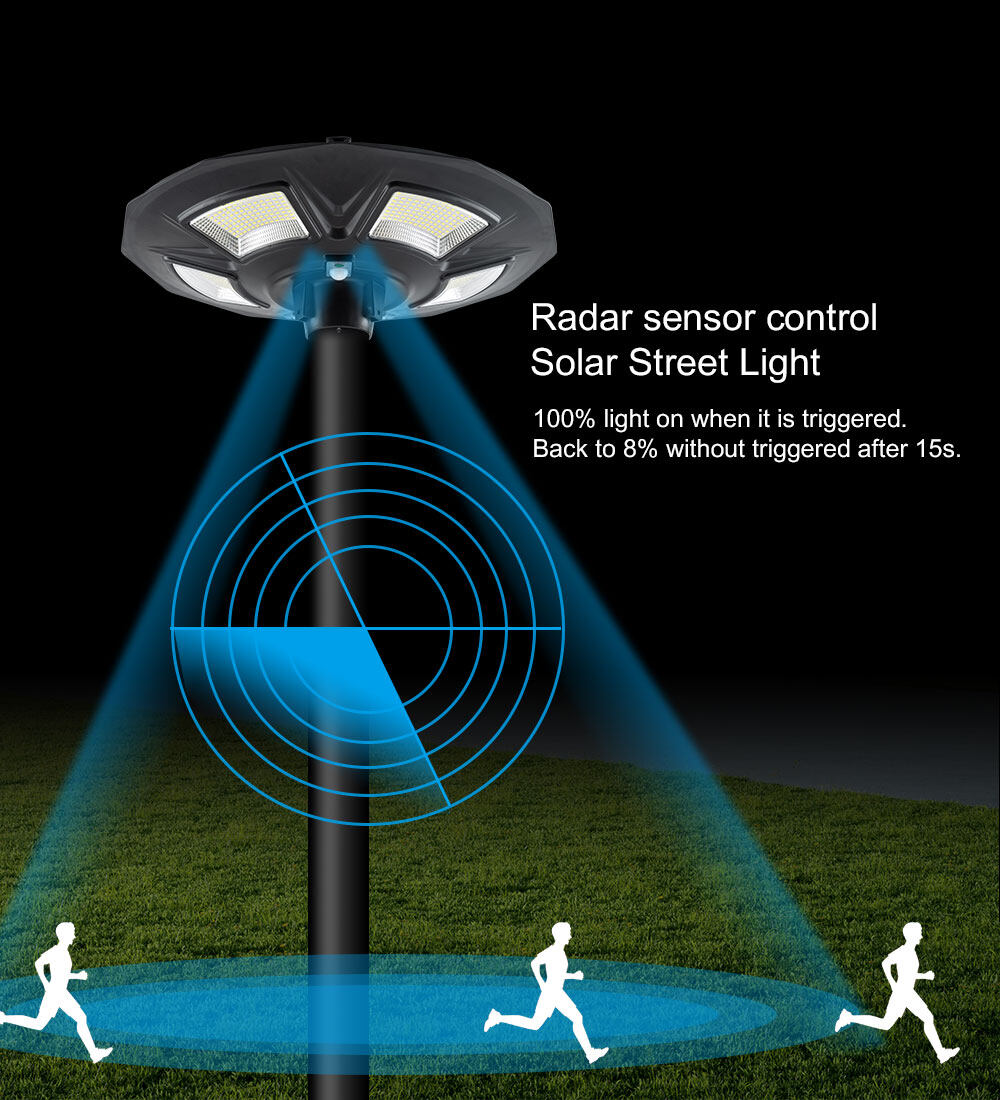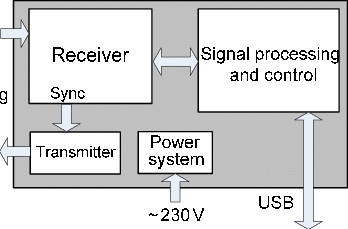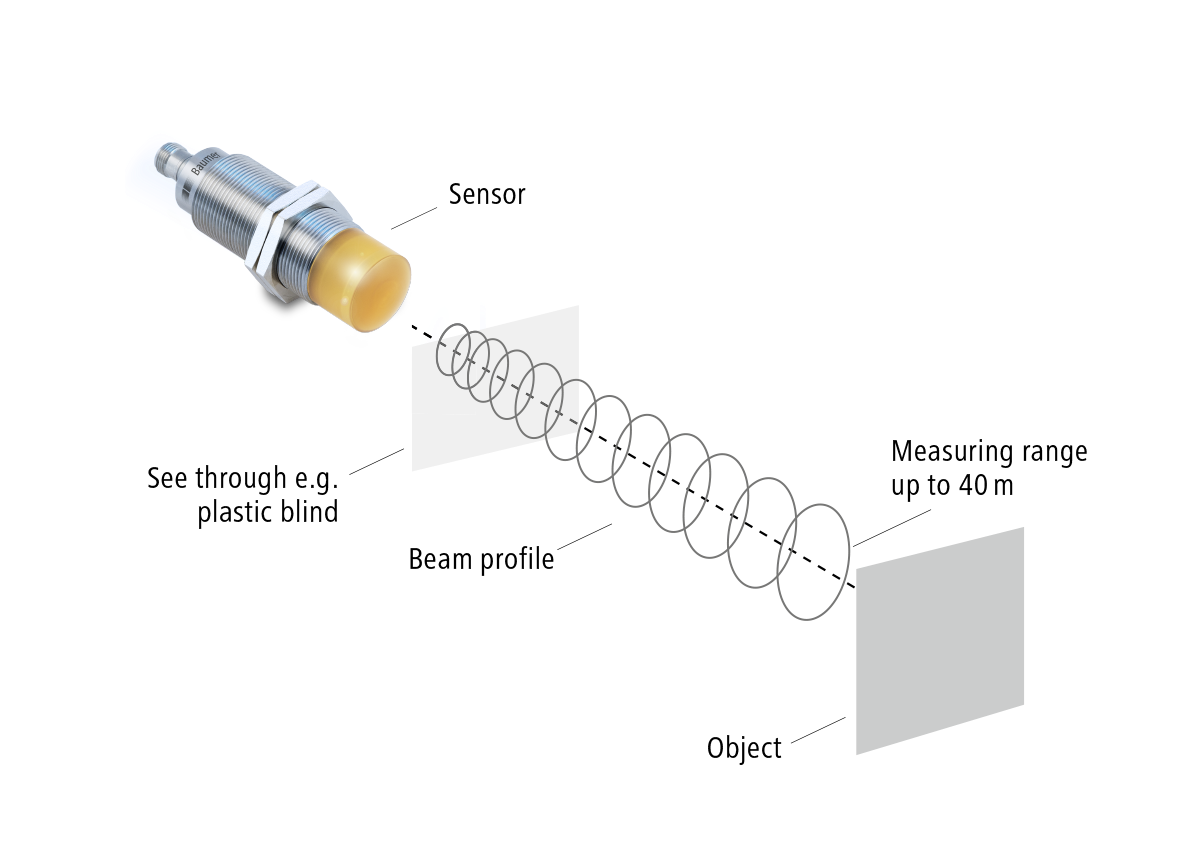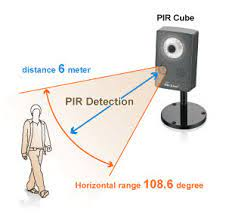
A number of motion sensors use electromagnetic radiation emitted and received to detect the presence of a moving object in their vicinity. Once an object has been detected, they send automatic signals to the display unit, which could be a light or an alarm. The display unit thus responds by raising the alarm or increasing the brightness of the light, as in the case of outdoor lighting.
The main difference between a radar sensor and a human sensor is that a radar sensor both emits and receives electromagnetic waves to and from the object. When its emitted signals hit the object, it is able to determine the position, speed, and proximity of the object to its location.
The radar sensors also identify and trigger a response for every moving object identified, regardless of whether it is a living thing or not.
On the other hand, a human sensor relies on cardiopulmonary movement generated by a moving person or animal to detect its presence within the surrounding. Unlike other motion sensors, it only detects the cardiopulmonary movement of people or animals as an indicator of their presence.
An added advantage to this sensor is that it is able to distinguish between the cardiopulmonary movement of a stationary person and that of a moving individual. This helps it to avoid false alarms in the case of a stationary individual.
This article gives a detailed breakdown of the various motion sensors, their classification, and their daily use.
Solar streetlights are wired to smart motion sensors primarily for security and energy conservation purposes. The sensors use infrared(IR) technology to detect all movement from a distance and turn on the lights or increase their brightness within 2 seconds of detection
Solar lights can be wired with either active infrared, passive IR, or hybrid sensors that help them respond to an object's intrusion.

LED Solar Motion Sensor Wall Light
Whether it is for security or energy-saving purposes, motion sensors have become an integral part of most outdoor solar lighting and security systems in organizations.
Fitting your solar lights with sensors will help reduce your solar operation costs almost by half price. Motion sensors are considered a cost-effective means of energy conservation due to their smart operation mechanism. They have been used to regulate lights during the day by turning off the lights upon detecting the presence of sunlight.
Other than lighting, motion sensors have been used in automated door controls, motor vehicle tracking, security alarm controls, hand dryers, etc. Human motion sensors have been used in medical research, military operations, etc.
Types of motion sensors: There are 3 common motion sensors: active infrared sensors (radar sensors), passive IR sensors, and hybrid/dual technology sensors.
As stated earlier, a radar sensor utilizes the doppler effect technology; described as a change in the frequency of a wave in relation to the sensor, which is moving relative to the wave source.
The energy change enables the radar to detect the presence of a moving object in its environment. Once the sensor has detected a change, it sends an electrical signal to the display system, which can either be LED lights, automated alarms, or other devices connected to the sensor.
Radar sensors interpret the signals by converting the microwave signals received from the object to electric signals, which are then used to generate an output response.
The widely used types of radar sensors include: continuous wave radar, pulse-doppler radar, coherent pulsed, and frequency-modulated continuous wave (FMCW) radar.
1. The continuous wave (FMCW) radar can translate and determine the range of an object from the sensor.
2. From the name, pulse-doppler radar has the ability to determine the rate at which a target moves toward or away from a sensor.
3. As one of the oldest models, continuous wave radar only provides a speed output. It compares the frequency of the signal received from the object to the original signal sent out.
4. It also uses the Doppler effect to detect the difference in the individual objects received.
A radar sensor is made up of a transmitter, antenna, receiver, signal processor, and display unit. The antenna generates a signal to the target object. When the signal hits the object, it bounces back in the form of energy through the radar's receiver antenna into the transmitter.
The latter transports the signal to the signal processor, which interprets it and prompts a reaction through the display unit. The display unit could either be a light bulb, door, or security alarm.

Radar Sensor Working Principle
A transmitter within the radar generates electromagnetic/radio waves which travel at the speed of light to the target object. As soon as the waves hit the object, they are reflected and detected by the radar receiver, which helps to process and analyze them to determine the distance, speed, and position of the object.

How radar technology works in solar lights
In solar lights, the wave signals received by the radar in form of data, trigger an immediate response. The result is an increase in the brightness of the LED lights which later decreases to 20% or less as soon as the object exits the vicinity.
A good example of using radar in solar street lighting is Yuefeng's range of solar lights.
The lights turn to 100% brightness within 15s of motion detection. They also go dim to 20% brightness once the person leaves the vicinity. It, therefore, provides prompt security alerts and helps to conserve energy as well.
Active IR (Radar Sensor) in YT08 Solar street light.
Integrated Solar Street Light Supplier
This flood light can continuously light as per your time setting. The lights turn to 100% brightness at the approach of an object and go back to 20% after 15 seconds.
Solar Flood Lights With Remote Control
The model operates with a radar sensor to enable it to go to 100% brightness when triggered by a moving object and back to 8% at the disappearance of the stimulant.
* Its electromagnetic waves can penetrate non-conducting materials such as wood, plastics, and glass.
* Unlike other sensors, it can detect a wide range of object information, like the speed, position, and proximity of an object.
* It is the most common type of sensor used in solar and other industries.
* It is stable even in extreme weather conditions.
* Its principle of operation encourages energy saving. This is because the lights remain dim when there is no motion.
* Radar sensors have a lower cost of maintenance.
* Depending on the model, the angle of vision can rotate and capture objects up to a 360-degree spin.
* It is safe for people and animals.
* They can sense objects both during the day and at night.
* Effective for both indoor and outdoor installations.
* These radars can raise a false alarm due to their high sensitivity.
* The objects identified are anonymous. The sensor cannot distinguish who or what has been detected.
* Quite costly compared to passive IR types of sensors.
They use a pyroelectric sensor, an infrared-sensitive optoelectronic component, for detecting electromagnetic radiation in a wavelength range of 2 to 14 µm. The pyroelectric sensor can detect the radiation emitted by the object, which it uses to initiate a response.
Passive IR sensors are considered to be quite complex in their makeup. They are fitted with two special compartments; one sends out the signal, and the other receives it. When the sensor detects a difference in energy between the two compartments, a pulse (detection of movement) occurs. Passive IR sensors can also be modified to detect humans' presence in the surroundings solely.

Passive IR sensors
The SBD01external solar wall light is fitted with passive Infrared sensors that allow a sensing distance of 3 meters.
They are cheaper as compared to radar sensors.
PIR has a low power consumption and maintenance cost.
They are user-friendly and easy to use/operate.
They cover a shorter distance; a number of older versions of Passive IR sensors have a limited field of vision of up to 180 degrees. However, new models have the ability to detect their surroundings at an angle of 360 degrees.
They are highly sensitive and could easily experience interference which changing weather conditions.
Due to their sensitivity, they can trigger a false alarm.
It cannot operate both during the day and at night.
They cannot determine the exact position of an object in its view.
They have a problem with false occupancy sensor syndrome. These sensors can intercept energy changes from a person who has just left the premises and raise the alarm.
When the energy charge is low, passive IR sensors can lose their effectiveness.
Since it does not emit signals, it does not have the ability to penetrate objects; be they plastic or glass.
Also known as the microwave doppler radar occupancy sensor; human sensors are programmed in such a way as to detect energy generated by human and animal movement only. This limits the frequent cases of false alarms triggered by the different types of sensors at the slightest movement of an object.
Research shows that this type of sensor was invented to eliminate the problem of false occupancy sensor syndrome, found to be common among the other types of sensors.
It is used solely to identify the presence of a moving human body within the surrounding. It does this by the detection of cardiopulmonary movement as an indicator of human presence.
The technology allows the sensor to avoid false alarms triggered by the detection of every kind of electromagnetic energy in the surrounding. It is also able to distinguish between the heartbeat of a stationary human being and an individual in motion.
Prevents false alarm in the case of a moving non-living object.
Offers higher security because its target is suspicious human behavior within the vicinity.
Conserves more energy since the lights remain dim or the alarm stays off as long as no moving person or animal has been detected.
Have a wider scope of application e.g; correctional facilities, home, and office security, tracking illegal onboarding of company vehicles. etc
The cost of purchase and installation is higher compared to other types of sensors.
This technology is still under study and improvement; meaning it is yet to be fully implemented. Current studies are trying to distinguish between the heartbeats of human beings and animals to help narrow down their focus on humans.
It combines a variety of sensors' work mechanisms to produce an all-inclusive type of sensor. For instance, a hybrid sensor can be made up of an active IR( radar sensor) and a PIR type of sensor.
Its advantage is that it improves on the weaknesses of the other sensors by being able to detect motion, speed, and position and still be cost-effective.
However, the two sensors infused in the hybrid sensor must work together to detect an object and trigger a response. This means that it does not offer the same level of security as when the sensors work independently.
Transmit and receive signals to and from the object.
Can detect all forms of moving objects
Uses electromagnetic waves transmitted to and received from the object to trigger a reaction
Cannot define who or what moved
Are not affected by day or night conditions
Are much cheaper and widely used
Soley receives signals from the object in the form of detection of cardiopulmonary movement.
Designed specifically to detect human and animal movements
Use the cardiopulmonary movement of a person or animal to trigger a response
A continuous innovation with low market availability at the moment
Expensive compared to other sensors
Cannot operate both in the day and at night
This article has already discussed a number of features that help in the classification of the various types of sensors.
Since the motion sensor will work alongside a solar lighting or security system, here are a number of factors to consider while making your purchase.
Research shows that earlier models of the Passive IR sensors could rotate only to a maximum of 180 degrees. This means that some of the objects approaching the sensor outside its target range will not be detected. A good sensor should be able to rotate at 360 degrees and cover a distance of about 40-50 feet.
To maintain active security operations, the sensors must be fitted with a stable power source that does not discharge at a faster rate.A good battery will enable the lights to generate 100% brightness at the trigger of a sensor.
Li-ion batteries are the most common type of batteries used in lighting and sensors. They retain charge for a long time, are less expensive, and have a long lifespan.
LED lights have proven to be the most efficient form of lighting for solar systems. At the approach of an object( stimuli), the lights should be able to emit 100% brightness as an indication of security threats.
Solar lights of high voltage amounts will also require a higher amount of energy to achieve full brightness. This translates to a higher energy consumption thus the need to frequently charge the batteries which is not cost-effective in the long run.
Three types of motion sensors have been discussed in this article. A number of outdoor solar lights are packaged alongside active IR sensors ( radar sensors) because of their many advantages.
A better alternative would be the hybrid sensors which are able to combine the functions of both radar sensors and passive infrared sensors to produce a more effective outcome.
Goes without saying. Consider the purchase and installation costs. An added advantage is that companies such as Yuefeng will provide you with customized solar lights, fitted with motion sensors at a relatively affordable price.
The major difference between radar sensing and human sensing is in the mechanism of their operation and the target object for each sensor.
For the operation mechanism, radar sensors emit and receive electromagnetic waves to and from the object. Whereas human sensors act on signals received from the object(human and animal) to trigger a response to the display unit.
Unlike other motion sensors, human sensing technology works by detecting the cardiopulmonary movement of the person or animal as an indicator of its presence. Radar sensing on the other hand involves the detection of all kinds of objects without verifying whether it is a human being or not.